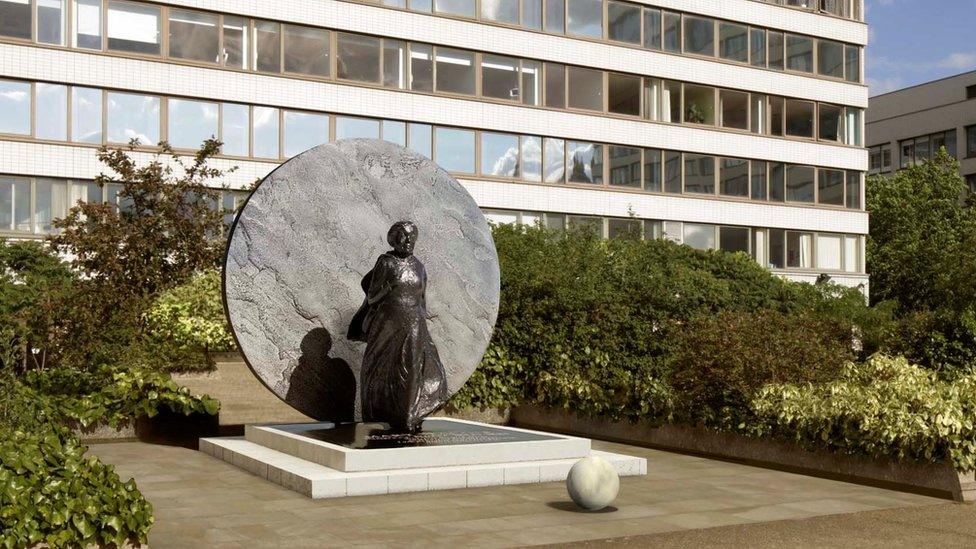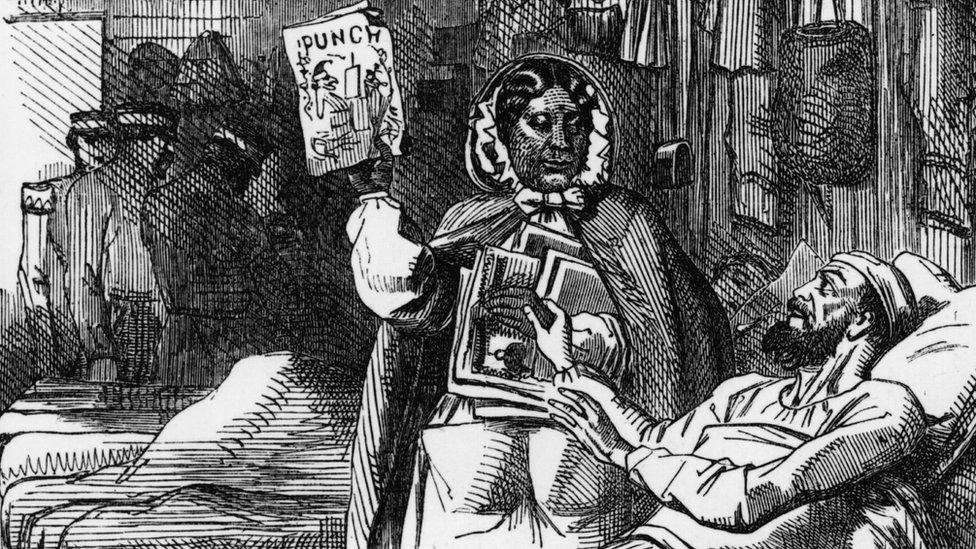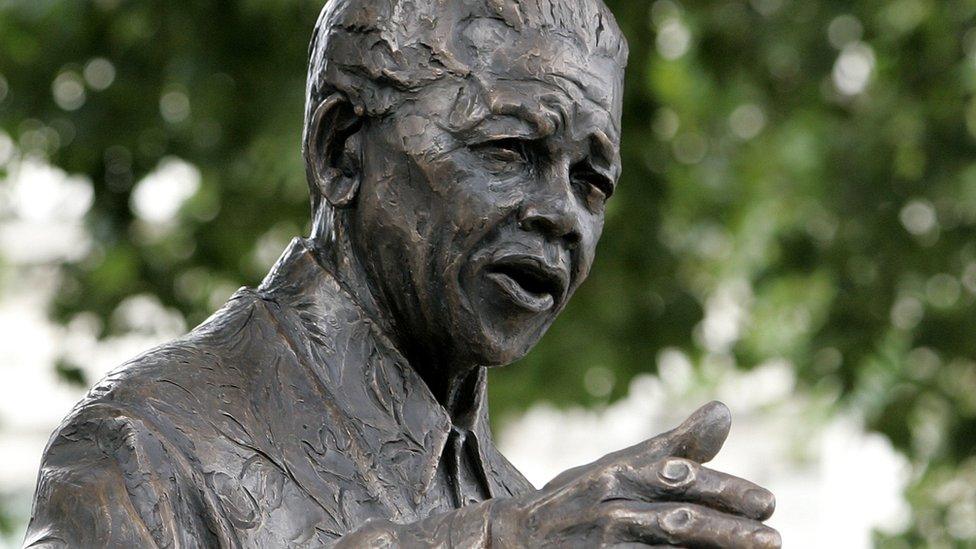Mary Seacole statue unveiled in London
- Published

The statue stands opposite the Houses of Parliament in the grounds of St Thomas' Hospital
A memorial statue believed to be the UK's first in honour of a named black woman has been unveiled in London.
Mary Seacole was a Jamaican-born nurse who cared for wounded British soldiers during the Crimean War in the 19th Century.
The statue's completion follows a 12-year campaign which raised £500,000 to honour her.
Tottenham MP David Lammy said it was a "seminal moment for Londoners, and for the black community particularly."
Actress and broadcaster Baroness Benjamin unveiled the statue.

Punch magazine pays tribute to Mary Seacole during the Crimean War in 1857
Emeritus Professor of Nursing Elizabeth Anionwu said the unveiling was "extremely significant" because it was believed to be the first memorial statue of a named black woman in the UK.
"For somebody like myself, a nurse of mixed heritage - Mary was Jamaican-Scottish, I'm Nigerian-Irish heritage - there's a link there.
"I have an eight-year-old granddaughter, and at last youngsters will be able to see a beautiful monument that they can identify with."
"Too often difference gets written out of history," said Mr Lammy.
"Mary Seacole's pioneering work saved lives and people of all backgrounds can draw inspiration from the fact that her achievements have finally been recognised."
'Aid and succour'
The statue was created by sculptor Martin Jennings and stands opposite the Houses of Parliament in the grounds of St Thomas' Hospital.
It is inscribed with words written in 1857 by The Times' Crimean War correspondent, Sir William Howard Russell: "I trust that England will not forget one who nursed her sick, who sought out her wounded to aid and succour them, and who performed the last offices for some of her illustrious dead."
In November, Chancellor George Osborne announced the Treasury would contribute £240,000 to help pay for the installation.
In 2013 transport charity Sustrans depicted Mary Seacole alongside other figures as part of their Portrait Bench Series, external commemorating local heroes. The two-dimensional steel portrait can be found along the walking and cycling route in Paddington Green, along with code-breaker Alan Turing and the children's character Paddington Bear.

Mary Seacole, 1805-1881

Born in Jamaica to a Scottish soldier and a Jamaican woman in 1805, Mary Jane Grant considered herself a Creole, who had few civil rights - they could not vote, hold public office or enter the professions
She learned her nursing skills from her mother, who kept a boarding house for invalid soldiers
Married Edwin Seacole in 1836 - he died eight years later
She travelled widely and studied traditional and European medical ideas
In 1854, she travelled to England and approached the War Office, asking to be sent as an Army nurse to the Crimea
She was refused but went anyway. Once there, she established the British Hotel near Balaclava to provide "comfortable quarters for sick and convalescent officers" and also nursed the wounded on the battlefield - sometimes under the hail of gunfire
She became known as "Mother Seacole" and, at the time, her reputation rivalled that of Florence Nightingale
After the war she returned to England destitute and in ill health
In July 1857 a benefit festival was organised to raise money for her, attracting thousands of people
She died on 14 May 1881

"If you have a statue for Florence Nightingale, you should have one for Mary Seacole," said the historian Dr Ron Ramdin, who wrote her biography.
"She had no privileges. She had to make her own way, which in the 19th Century for a black woman was very difficult.
"The fact that when she met Florence Nightingale and she did not get the job nursing in the Scutari hospital didn't faze her. She continued on her way to the front."

Other London statues commemorating black people

Nelson Mandela was present at the unveiling of his statue in Parliament Square in 2007
A statue of South Africa's first black president Nelson Mandela stands in Parliament Square
Gilt of Cain, external, just off Fenchurch Street, is a group of granite columns surrounding a pulpit. It commemorates the abolition of the slave trade in 1807 and incorporates extracts from Lemn Sissay's poem of the same name.
The Bronze Woman, Stockwell Terrace, features a woman holding a baby aloft and is inspired by Guyanese poet Cécile Nobrega, external.